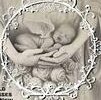Newborn babies have very sensitive skin that easily gets irritated and they’re not good at regulating their body temperature, so it’s important to dress them in clothes that will keep them warm or cool as needed. Baby clothing is made from soft fabrics like 100% cotton, french terry and stretchy viscose, which are gentle against their delicate skin. The fabric should also be breathable, to prevent overheating. Many parents prefer to choose clothes that are velcro fronted, as these can be pulled on and off without needing to undo the entire outfit.
Babies need to move their arms and legs in order to develop their motor skills, so loose-fitting clothes that allow them to do so are best. Clothes that are too tight restrict their movement and can be uncomfortable for them, so they won’t move or develop as well. Look for clothes that don’t have elastic at the wrists, ankles or waist – these can dig into baby’s skin and cause irritation.
It’s best to purchase a wide range of different clothes, so you have something on hand for all occasions and weather conditions. It’s a good idea to start with a few bodysuits or onesies, a couple of pairs of short and long pants, a few dresses or skirts, a couple of cardigans and some sweaters. You should also have plenty of bibs to cover up any mess during feeding time and to help keep your little one clean.
If you’re concerned about chemicals in the clothes, or if your infant has any allergies, consider buying clothes made from natural fabrics such as organic cotton or bamboo. These non-toxic materials are less likely to irritate your child’s delicate skin, and they’re also gentler on the environment as they’re grown using sustainable processes.
Creating a practical newborn wardrobe will make changing your little one easier during the first few weeks at home. Many parents find that they’ll need a few special outfits for events such as going home from the hospital, meeting family and friends and photos. You may also want to add a few footie PJs and gowns for daytime sleep.
Choosing a simple color palette will make mixing and matching your baby’s clothing more convenient. It’s best to have a selection of neutral-colored bodysuits and onesies (6-8), as they will go with most other pieces in their closet. Then, select some solid-colored pants (3-4), reversible jackets or sweaters and dual-sided bibs (4-6) to create versatile outfits. Don’t forget socks (5-6) and soft hats (2-3) for warmth and to add a cute finishing touch to any outfit.
For more information on building a practical wardrobe for your baby, watch this Solicited Advice webinar co-hosted by Lauren Gregor, founder of Rent-a-Romper.
